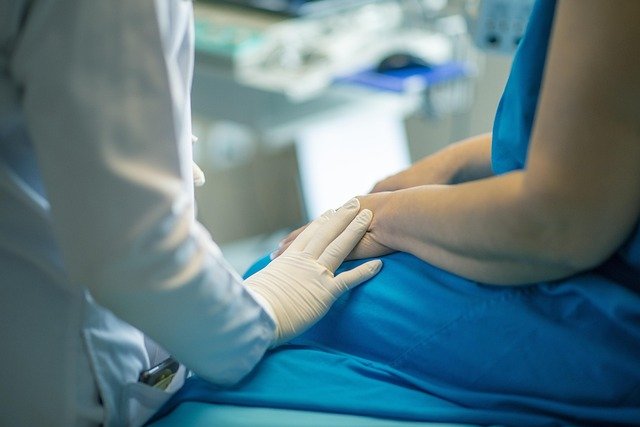Exploring Non-Surgical Fat Loss Methods That Show Promise
Non-surgical fat reduction methods offer alternatives to traditional procedures, using advanced technology to target stubborn areas with minimal downtime. From subtle shaping to more visible results, exploring these options can help individuals make informed decisions that match their goals and lifestyle — without the need for surgery.

What is Laser Lipolysis and How Does it Work?
Laser lipolysis, also known as laser fat reduction, is a non-invasive procedure that uses laser energy to break down fat cells. This technique involves applying a controlled laser beam to target specific areas of the body, causing fat cells to rupture and release their contents. The body then naturally eliminates these broken-down fat cells through its lymphatic system.
The procedure is typically painless and requires no anesthesia. Patients may experience a warming sensation during treatment, but discomfort is generally minimal. Laser lipolysis is particularly effective for small, localized areas of fat, such as the chin, arms, or thighs.
Understanding Ultrasound Slimming Treatments
Ultrasound slimming treatments utilize high-frequency sound waves to target and destroy fat cells beneath the skin’s surface. This non-invasive technique works by creating tiny bubbles within fat cells, causing them to implode and be naturally eliminated by the body’s metabolic processes.
One of the most popular ultrasound-based treatments is Ultrasound Cavitation. This procedure is painless and can be performed on various body areas, including the abdomen, thighs, and buttocks. Results are often visible after a series of treatments, with patients experiencing a reduction in fat and improved skin texture.
How Does Cryolipolysis Transform Body Contours?
Cryolipolysis, commonly known by the brand name CoolSculpting, is a fat-freezing technique that has gained significant popularity in recent years. This FDA-approved treatment works by cooling fat cells to a temperature that causes them to crystallize and die off, without damaging surrounding tissues.
During the procedure, a specialized applicator is placed on the target area, delivering controlled cooling to the fat layer beneath the skin. Over the following weeks and months, the body naturally processes and eliminates the treated fat cells, resulting in a more contoured appearance.
Cryolipolysis is particularly effective for treating areas like the abdomen, love handles, and back fat. While some patients may experience temporary numbness or redness, the treatment is generally well-tolerated with minimal downtime.
What Role Does Radiofrequency Play in Fat Reduction?
Radiofrequency (RF) treatments for fat reduction use heat energy to target fat cells and stimulate collagen production. This dual-action approach not only helps to reduce fat but also improves skin tightness and texture.
During an RF treatment, a device emits radiofrequency waves that penetrate the skin, heating the underlying fat tissue. This heat causes fat cells to break down while simultaneously encouraging collagen and elastin production. The result is a smoother, more toned appearance in the treated area.
RF treatments are versatile and can be used on various body parts, including the face, neck, arms, and abdomen. Many patients appreciate the added benefit of skin tightening, which can help address loose skin often associated with fat loss.
Understanding Treatment Combinations and Enhanced Results
While each non-surgical fat reduction method offers unique benefits, combining treatments can often lead to enhanced results. Many clinics now offer customized treatment plans that incorporate multiple technologies to address individual concerns more comprehensively.
For example, a treatment plan might include cryolipolysis to reduce fat volume, followed by radiofrequency sessions to tighten the skin and improve overall texture. This combination approach can provide more dramatic and long-lasting results than single-modality treatments alone.
It’s important to note that results from non-surgical fat reduction treatments are generally more subtle than those achieved through surgical procedures. However, they offer the advantage of minimal downtime and lower risk, making them an attractive option for many individuals seeking body contouring solutions.
What Are the Costs and Providers for Non-Surgical Fat Removal?
When considering non-surgical fat removal treatments, it’s essential to understand the associated costs and choose a reputable provider. While prices can vary significantly based on location, treatment area, and the specific technology used, here’s a general overview of what you might expect:
| Treatment | Average Cost Range | Typical Provider |
|---|---|---|
| Laser Lipolysis | $1,500 - $5,000 per area | Med Spas, Dermatology Clinics |
| Ultrasound Slimming | $250 - $700 per session | Med Spas, Aesthetic Centers |
| Cryolipolysis (CoolSculpting) | $2,000 - $4,000 per area | CoolSculpting Certified Clinics |
| Radiofrequency Treatment | $300 - $800 per session | Med Spas, Plastic Surgery Centers |
Prices, rates, or cost estimates mentioned in this article are based on the latest available information but may change over time. Independent research is advised before making financial decisions.
When selecting a provider, look for board-certified physicians or licensed aestheticians with specific training in the chosen treatment modality. Many reputable clinics offer free consultations, allowing you to discuss your goals and receive a personalized treatment plan and cost estimate.
In conclusion, non-surgical fat removal methods offer promising alternatives for individuals seeking to refine their body contours without the risks and downtime associated with surgery. From laser lipolysis to cryolipolysis, these innovative techniques provide a range of options to address different body areas and concerns. While results may be more subtle than surgical interventions, many find the trade-off in terms of convenience and reduced risk to be worthwhile. As with any cosmetic procedure, it’s crucial to have realistic expectations and consult with a qualified professional to determine the best approach for your individual needs and goals.
This article is for informational purposes only and should not be considered medical advice. Please consult a qualified healthcare professional for personalized guidance and treatment.




